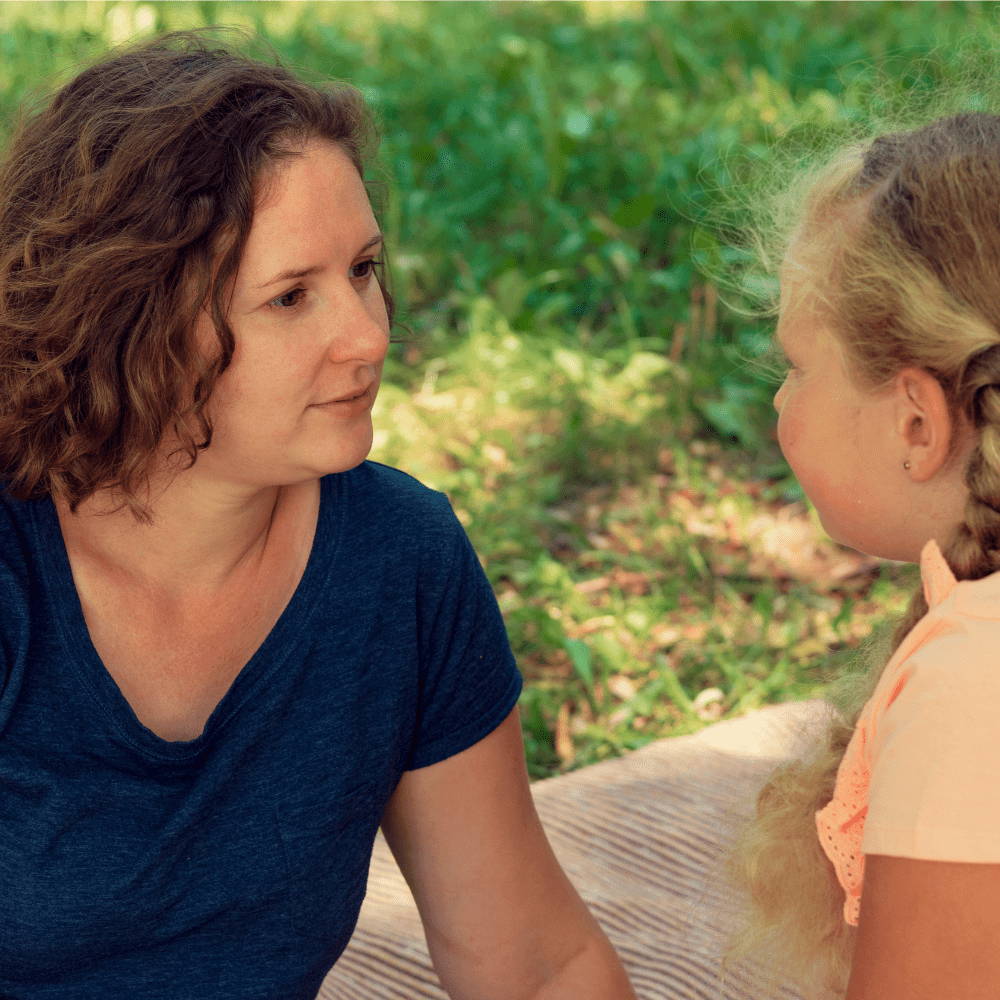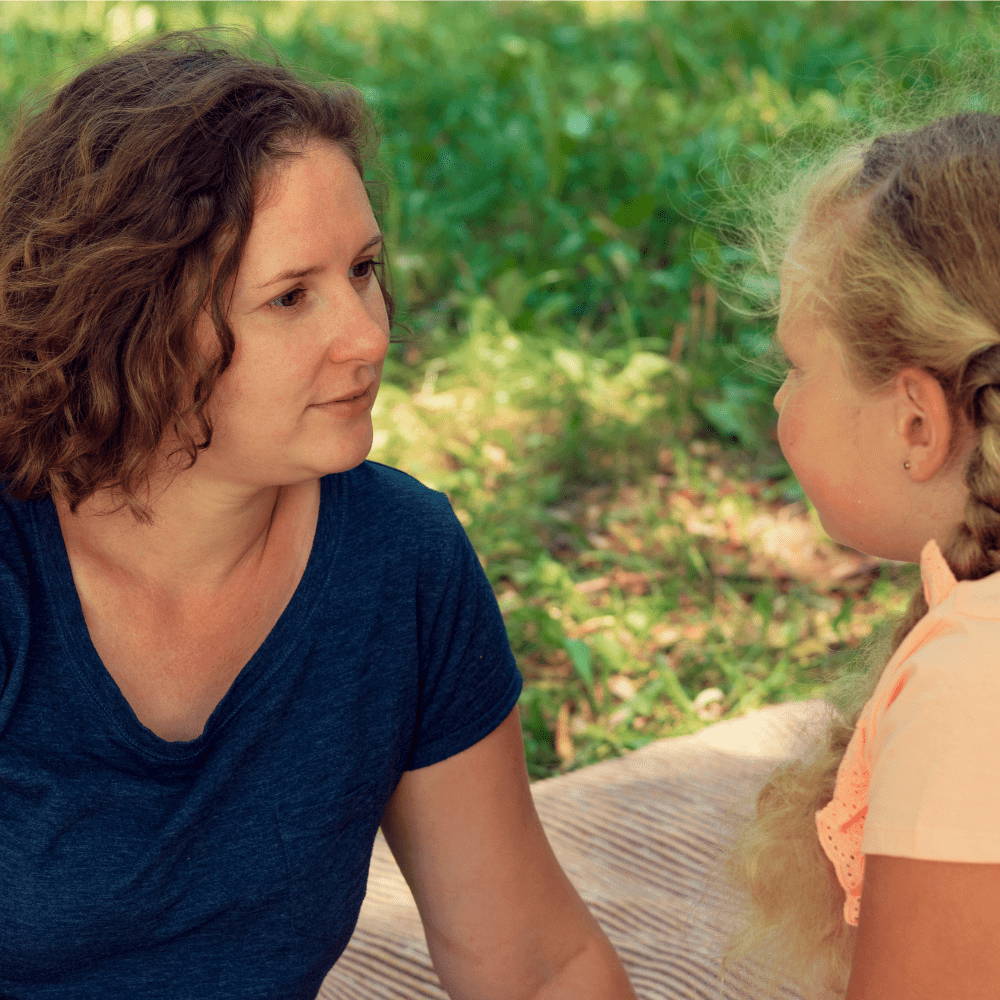How to Talk to Girls About Race
JUNE 23RD, 2020

The last four weeks have been emotional, devastating, moving and eye-opening for families across the US. With the murder of George Floyd and protests that followed, many parents are looking for ways to talk to kids about race. This can be a difficult topic, but expert advice, children’s books and webinars can make it easier. Below are four resources that we found helpful.

According to Ashaunta Anderson and Jacqueline Dougé of the American Academy of Pediatrics, children start noticing "race-based differences” at 6 months old and by 2-4 yrs, they can start to "internalize racial bias”.
Because children start learning about race and bias at a young age, it makes sense to have intentional conversations with kids about race to help shape their thinking. Anderson and Dougé encourage parents to "Talk to your children,” "Confront your own bias,” and "Encourage your children to challenge racial stereotypes and racial bias.” Check out the full article for details and more helpful tips.
Because children start learning about race and bias at a young age, it makes sense to have intentional conversations with kids about race to help shape their thinking. Anderson and Dougé encourage parents to "Talk to your children,” "Confront your own bias,” and "Encourage your children to challenge racial stereotypes and racial bias.” Check out the full article for details and more helpful tips.

Echoing the sentiments of Anderson and Dougé, Howard Stevenson, a clinical psychologist and professor at the University of Pennsylvania’s Graduate School of Education, recently told Vox, “You’re always communicating about race, whether you talk about it or not.”
Stevenson breaks down how "People, children and adults, sometimes see a racial moment as threatening” and overreact. They may become so overwhelmed that "that they try to avoid a racial moment.” He recommends using mindfulness techniques to "bring their brain from sort of locking down to being much more open to seeing around themselves, to hearing better, to listening better” and ultimately making better decisions about how to proceed (speaking up, having a conversation, etc.). Read the article for more info about using mindfulness and talking to kids so they'll be prepared for "racial moments" when they arise.
Stevenson breaks down how "People, children and adults, sometimes see a racial moment as threatening” and overreact. They may become so overwhelmed that "that they try to avoid a racial moment.” He recommends using mindfulness techniques to "bring their brain from sort of locking down to being much more open to seeing around themselves, to hearing better, to listening better” and ultimately making better decisions about how to proceed (speaking up, having a conversation, etc.). Read the article for more info about using mindfulness and talking to kids so they'll be prepared for "racial moments" when they arise.

If you’re looking to proactively start a conversation with a child about race, books can be helpful. PBS has put together a list of 13 books about race and diversity. Click here to view the list.

If articles aren’t your thing, check out this virtual workshop from Sachi Feris, a blogger and educator. During the interactive webinar, Feris walks participants through talking to young children about race in a very detailed way. For example, she takes the idea of using books to talk about race and really brakes it down—asking participants how they might address something offensive in a book with a child, and modeling how she recommends addressing situations like that. Learn more about the webinar here.
We hope you find these resources helpful.
How to Talk to Girls About Race
JUNE 23RD, 2020

The last four weeks have been emotional, devastating, moving and eye-opening for families across the US. With the murder of George Floyd and protests that followed, many parents are looking for ways to talk to kids about race. This can be a difficult topic, but expert advice, children’s books and webinars can make it easier. Below are four resources that we found helpful.

According to Ashaunta Anderson and Jacqueline Dougé of the American Academy of Pediatrics, children start noticing "race-based differences” at 6 months old and by 2-4 yrs, they can start to "internalize racial bias”.
Because children start learning about race and bias at a young age, it makes sense to have intentional conversations with kids about race to help shape their thinking. Anderson and Dougé encourage parents to "Talk to your children,” "Confront your own bias,” and "Encourage your children to challenge racial stereotypes and racial bias.” Check out the full article for details and more helpful tips.
Because children start learning about race and bias at a young age, it makes sense to have intentional conversations with kids about race to help shape their thinking. Anderson and Dougé encourage parents to "Talk to your children,” "Confront your own bias,” and "Encourage your children to challenge racial stereotypes and racial bias.” Check out the full article for details and more helpful tips.

Echoing the sentiments of Anderson and Dougé, Howard Stevenson, a clinical psychologist and professor at the University of Pennsylvania’s Graduate School of Education, recently told Vox, “You’re always communicating about race, whether you talk about it or not.”
Stevenson breaks down how "People, children and adults, sometimes see a racial moment as threatening” and overreact. They may become so overwhelmed that "that they try to avoid a racial moment.” He recommends using mindfulness techniques to "bring their brain from sort of locking down to being much more open to seeing around themselves, to hearing better, to listening better” and ultimately making better decisions about how to proceed (speaking up, having a conversation, etc.). Read the article for more info about using mindfulness and talking to kids so they'll be prepared for "racial moments" when they arise.
Stevenson breaks down how "People, children and adults, sometimes see a racial moment as threatening” and overreact. They may become so overwhelmed that "that they try to avoid a racial moment.” He recommends using mindfulness techniques to "bring their brain from sort of locking down to being much more open to seeing around themselves, to hearing better, to listening better” and ultimately making better decisions about how to proceed (speaking up, having a conversation, etc.). Read the article for more info about using mindfulness and talking to kids so they'll be prepared for "racial moments" when they arise.

If you’re looking to proactively start a conversation with a child about race, books can be helpful. PBS has put together a list of 13 books about race and diversity. Click here to view the list.

If articles aren’t your thing, check out this virtual workshop from Sachi Feris, a blogger and educator. During the interactive webinar, Feris walks participants through talking to young children about race in a very detailed way. For example, she takes the idea of using books to talk about race and really brakes it down—asking participants how they might address something offensive in a book with a child, and modeling how she recommends addressing situations like that. Learn more about the webinar here.
We hope you find these resources helpful.
